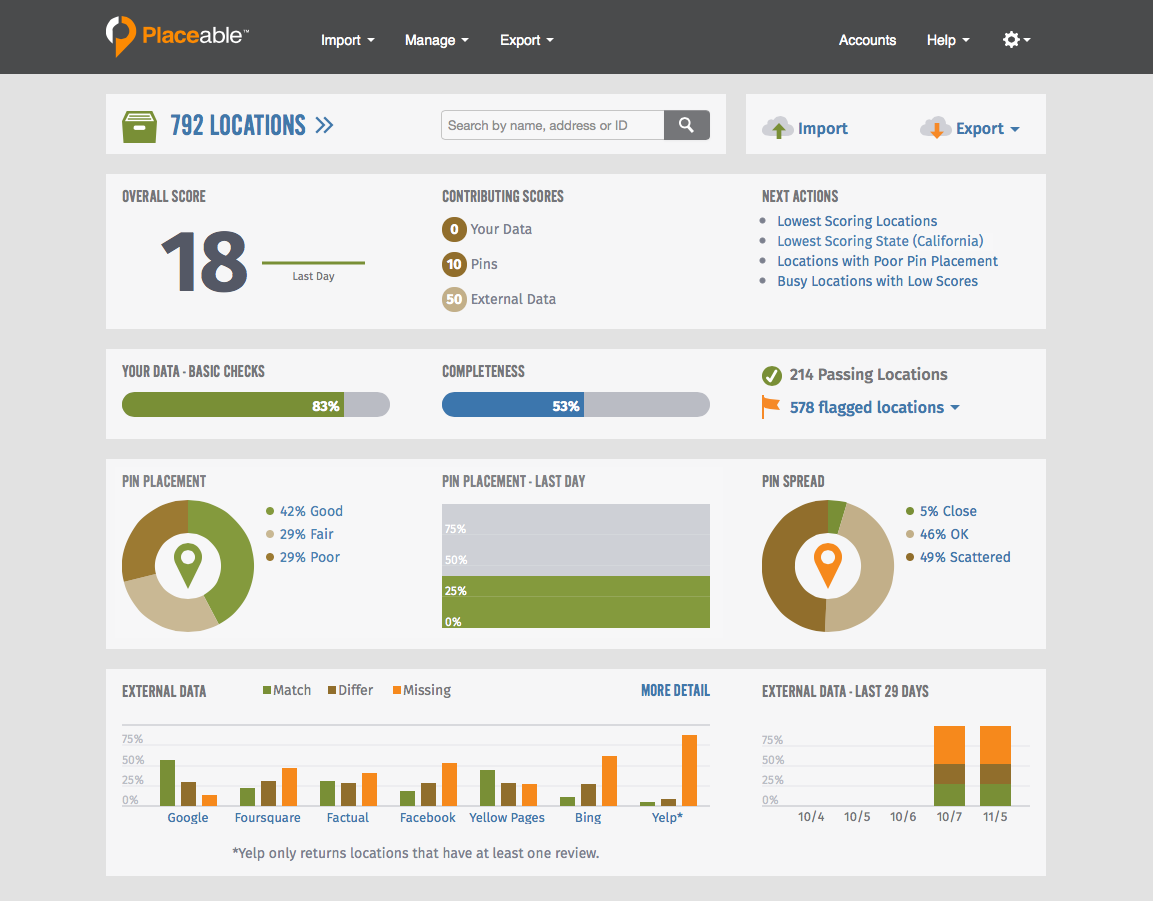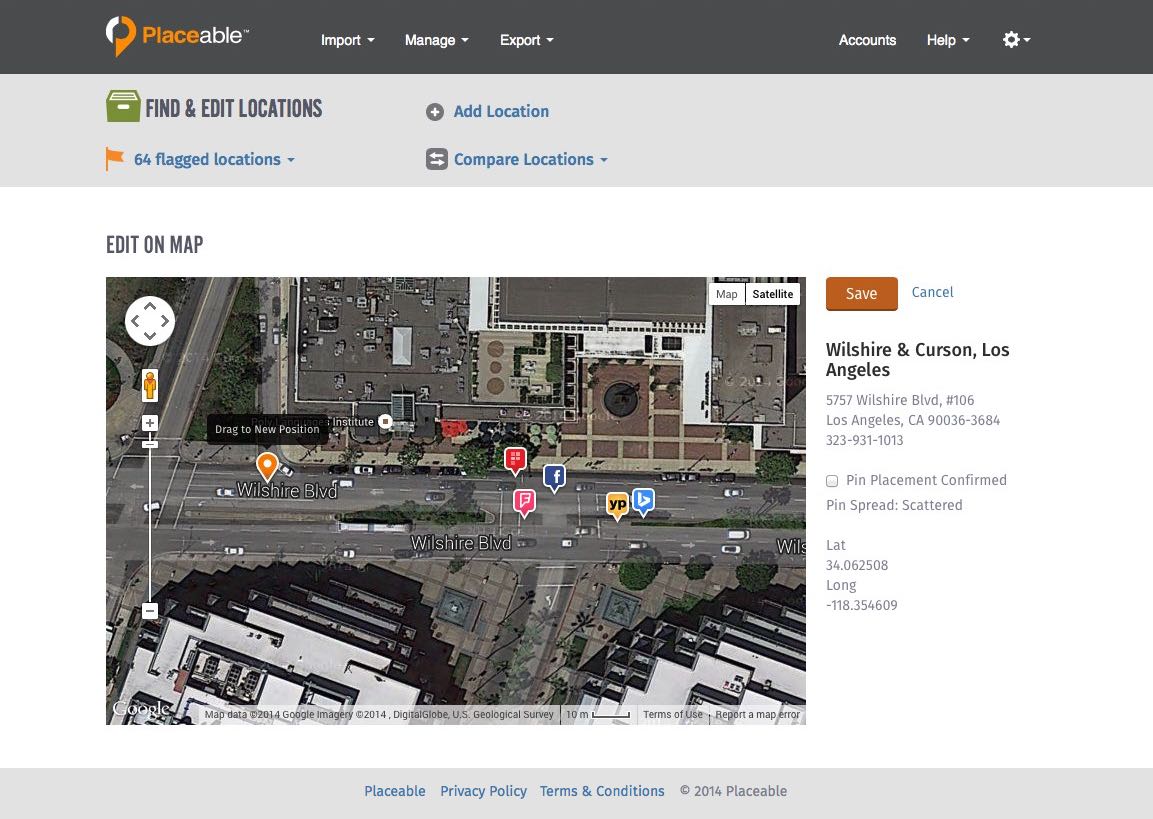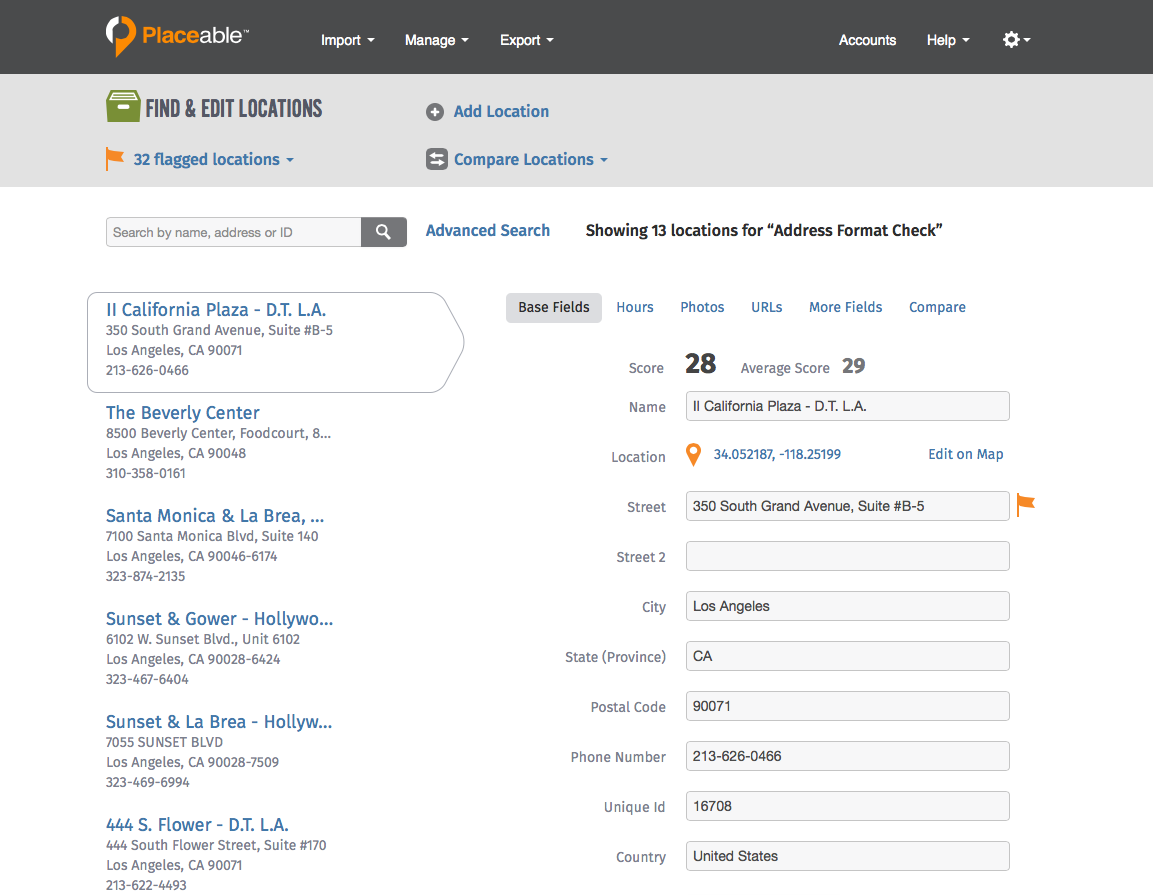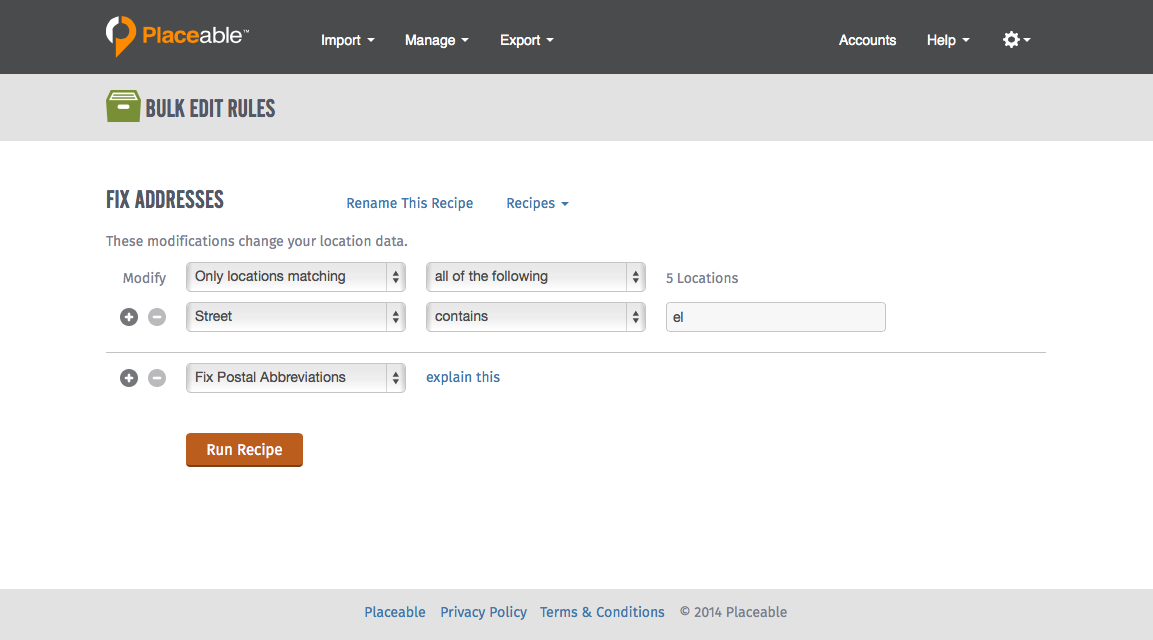Placeable Workbench
I was the lead UX designer at Placeable when we built Workbench, starting in 2013. Development of the product was continuous, and I led the design efforts until I left the company in October of 2014.
The Brief
This was an internal product idea, a SaaS application, aimed at brands with hundreds or thousands of locations. Brands with a large number of locations have some unique challenges in managing that data.
- Locations must have the right coordinates (latitude & longitude) so that driving directions are seamless for customers. Geocoding the address only gets you close. Showing up on the wrong side of the street (or in the middle) causes driving directions to be confusing. “You have arrived at your destination,” but you can’t find it.
- The data shown on local sites (Google, Yelp, Foursquare & others) needs to be consistent. Inconsistent data hurts local SEO efforts.
- Problems in the data, like ALL CAPS NAMES and suite numbers in addresses, need to be fixed before the data can be submitted. For example, Google would reject an entire file, if a single location had problems.
Brands with a lot of locations would typically hire an agency with experience in Local SEO. The agencies needed to collect and modify the company’s data.
- Depending on the organization, the location data might live in a large “legacy” database, like an AS400.
- Or it might live in a bunch of individual spreadsheets, with a different file for each region. This was common among franchises which were often fairly decentralized.
- The local SEO agency would work with the data in CSV format and would “clean it” using Perl, Python, or shell scripts, and with macros in Excel.
- This was a pretty ad hoc process because each organization had its own unique data format and individual problems that needed to be fixed.
The core idea of Workbench was to create a centralized repository for location data, one that helped find and fix common problems. It was aimed at less technical users. Instead of needing SEO experts capable of writing scripts to modify the data, the work could be done by people comfortable working in Excel.




